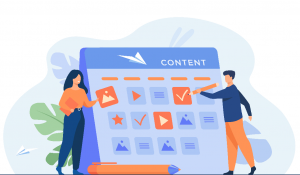Geographic Information System (GIS) software helps organizations analyze location data and create maps. Many companies need mapping capabilities but lack specialized GIS staff. Traditional GIS platforms require extensive training and technical knowledge. This creates problems for business teams who need spatial analysis but cannot hire specialists.
The Problem: Complex GIS Tools Block Business Teams
Most GIS software assumes users have technical training. These platforms use specialized terminology, require coding skills, and need IT support for installation. Business teams face several obstacles when trying to use traditional GIS tools:
Traditional GIS software costs hundreds of dollars per user each month. Installation requires IT department involvement. Updates need manual downloads and system maintenance. Users must learn proprietary commands and interfaces. Data formatting takes hours of preparation before mapping begins. Creating basic maps requires multiple software programs. Sharing results means exporting files and sending attachments.
These barriers prevent teams from using spatial data in their work. Sales departments cannot map customer locations. Operations teams struggle to plan delivery routes. Marketing groups fail to identify regional patterns. The technical complexity blocks access to valuable geographic insights.
Small and medium businesses feel this pain most acutely. They cannot afford dedicated GIS specialists. Their teams need mapping tools that work like other business software. According to 2025 technology reports, over 65% of new GIS deployments in non-geospatial industries now use cloud-based platforms designed for non-specialist workers.
Why Business Teams Turn Away From Traditional GIS
Traditional GIS platforms developed for specialized users. Companies like Esri built their software for geographers, urban planners, and GIS professionals. These tools offer powerful capabilities but assume deep technical knowledge.
Business users encounter immediate friction. Opening the software reveals dozens of toolbars and menus. Simple tasks like adding addresses to a map require multiple steps. Error messages use technical jargon. Help documentation spans thousands of pages.
The learning curve proves too steep for busy professionals. A sales manager needs to map territories, not learn coordinate systems. An operations director wants route optimization, not database management. Marketing analysts require heat maps, not programming skills.
Cost compounds the problem. Traditional GIS licenses run several hundred dollars monthly per user. Training adds thousands more. Maintenance requires ongoing IT support. Many organizations conclude that GIS remains out of reach.
Maptive: GIS Designed for Non-Specialists
Maptive takes a different approach. The platform assumes users have no GIS background. Every feature works through point-and-click interfaces. The system handles technical details automatically.
The platform runs entirely in web browsers. No downloads or installations needed. Updates happen automatically without user intervention. Teams access their maps from any device with internet connectivity.
Pricing starts at $99 per month for unlimited users. This includes all features, cloud storage, and automatic updates. Organizations avoid per-seat licensing costs. Small teams pay the same as large departments.
Instant Data Import Without Preparation
Maptive accepts data directly from Excel, Google Sheets, or CSV files. Users upload their existing spreadsheets without reformatting. The system recognizes address columns automatically.
Geocoding happens instantly upon upload. Addresses convert to map coordinates without user intervention. The platform uses Google's geographic search to ensure accuracy, even with imperfect address data.
Large datasets process smoothly. Advanced WebGL rendering handles thousands of points without browser crashes. Teams map entire customer databases or facility networks in seconds.
The split-screen view shows spreadsheet data alongside the map. Changes to data appear on the map immediately. Users see their information transform into visual insights without switching applications.
Territory Creation Without Drawing Skills
Territory mapping typically requires careful boundary drawing. Maptive automates this process. Users select their data and choose territory parameters. The system generates optimized boundaries automatically.
The Boundary and Territory Isolation Tool lets teams share focused map views. Sales managers see only their assigned regions. Regional directors view their specific areas. Sensitive data stays hidden from unauthorized viewers.
Territory balancing features help optimize sales coverage. The system analyzes data distribution and suggests boundary adjustments. Teams achieve equal workloads without manual calculations.
Custom territories remain fully editable. Users adjust boundaries by clicking and dragging. Changes save automatically to the cloud. Team members see updates in real time.
Data Visualization Without Design Skills
Maptive transforms spreadsheet data into visual insights automatically. Heat maps show customer density patterns. Pie chart clusters reveal category distributions. Color coding highlights performance metrics.
Users customize visualizations through dropdown menus. Marker colors change with simple selections. Icons upload directly from company brand assets. Labels appear or hide based on zoom levels.
Distance and area measurement tools support planning tasks. Users click points to measure routes. Polygons calculate coverage areas. Results export to reports without manual calculations.
Route optimization saves time and fuel costs. Users upload multiple addresses for visits. The system calculates efficient routes automatically. Results export to mobile navigation apps for field use.
Secure Sharing Without IT Involvement
Maptive handles security at enterprise levels. All data encrypts during transmission and storage. Two-factor authentication protects user accounts. Weekly automated backups prevent data loss.
Sharing happens through secure links. Users set expiration dates for temporary access. Password protection adds another security layer. Recipients view maps without creating accounts.
Maps embed directly into websites or presentations. Interactive features work in embedded views. Viewers explore data without leaving the host application. Updates to source data reflect automatically in embedded maps.
Static images export for offline use. High-resolution downloads work in printed reports. Spreadsheet exports include geocoded coordinates. Teams maintain full control over their data.
Real-Time Collaboration Without Version Conflicts
Cloud storage eliminates file version problems. Team members work on the same map simultaneously. Changes save automatically every few seconds. Conflict resolution happens behind the scenes.
Permission settings control access levels. Administrators grant view-only or editing rights. Department heads manage their team's permissions. Audit logs track all changes for compliance.
Comments and annotations facilitate teamwork. Users add notes to specific locations. Team members respond to create discussions. Decisions document directly on the map.
Mobile access supports field teams. Maps work on phones and tablets through browsers. Field staff update information on location. Office teams see changes immediately.
Recent Platform Improvements in 2025
Maptive released WebGL map rendering in May 2025. This technology increase improves performance for large datasets. Maps with thousands of points load and respond smoothly. Users experience no lag when zooming or panning.
The Maptive iQ update brings advanced analytics to non-technical users. Complex spatial calculations happen through simple menu selections. Results are displayed in plain language summaries. Technical details remain hidden unless requested.
Google Places integration arrives in late 2025. This feature adds competitive intelligence capabilities. Users see competitor locations alongside their own data. Market analysis becomes possible without leaving Maptive.
Automated territory management algorithms launch soon. These tools generate optimal territories based on multiple factors. Workload balancing happens automatically. Manual adjustments remain available for fine-tuning.
Why Organizations Choose Maptive Over Alternatives
Traditional GIS platforms like ArcGIS offer powerful features for specialists. These tools excel at complex spatial analysis. However, business teams need different capabilities. They value speed over precision. They want answers, not algorithms.
Maptive fills this gap. The platform provides professional results without professional training. Teams achieve their mapping goals in minutes instead of months. IT departments avoid support tickets. Budgets stay manageable.
The cloud-native architecture eliminates common pain points. No software installations mean no compatibility issues. Automatic updates prevent version mismatches. Browser access works everywhere. Remote teams collaborate as easily as office workers.
Security features match enterprise requirements. Banks, healthcare providers, and government agencies use Maptive safely. Compliance certifications cover major standards. Data ownership remains with customers. Privacy controls meet regulatory needs.
Implementation Without Disruption
Starting with Maptive requires minimal preparation. Teams export their existing data to spreadsheets. The upload process takes minutes. First maps appear immediately after upload.
Training happens through exploration. The interface guides users to features. Tooltips explain options. Video tutorials cover common tasks. Most teams become productive within one day.
Gradual rollout works well. Pilot projects prove value quickly. Success stories spread organically. Adoption accelerates as teams see results. Full deployment happens naturally.
Support remains available throughout implementation. Chat support responds during business hours. Email tickets receive next-day responses. Knowledge base articles cover detailed scenarios. User communities share best practices.
Conclusion
Maptive solves a specific problem for modern organizations. Business teams need mapping capabilities without GIS specialists. Traditional platforms create barriers through complexity and cost. Maptive removes these obstacles.
The platform delivers professional mapping through simple interfaces. Automation handles technical details. Cloud architecture enables instant access. Security meets enterprise standards. Pricing remains predictable and affordable.
Teams achieve spatial insights quickly. Sales territories optimize automatically. Delivery routes calculate efficiently. Customer patterns become visible. Location intelligence transforms from specialty skill to standard capability.
Organizations seeking GIS software without dedicated specialists find their solution in Maptive. The platform bridges professional capabilities with business user needs. Complex spatial analysis becomes accessible to everyone. Geographic insights join standard business intelligence tools. Teams make better decisions using location data they already possess.






